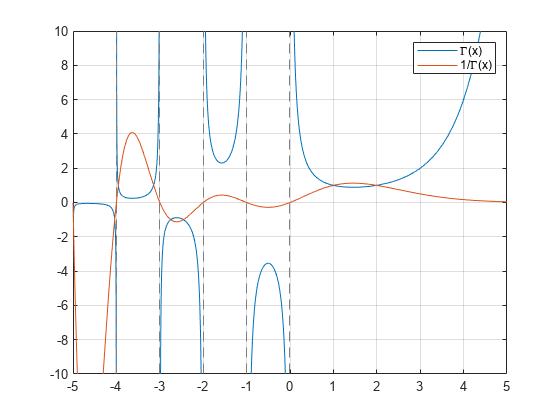gamma
Gamma function
Syntax
Description
Examples
Input Arguments
Limitations
For
doubleandsingledata types, thegammafunction returnsInffor all values greater thanrealmaxandrealmax('single'). The saturation thresholds for positive integers aregamma(172)andgamma(single(36)), where the evaluatedgammafunctions are greater than the maximum representable values.
More About
Algorithms
The computation of gamma is based on algorithms outlined in [1].
References
[1] Cody, J., An Overview of Software Development for Special Functions, Lecture Notes in Mathematics, 506, Numerical Analysis Dundee, G. A. Watson (ed.), Springer Verlag, Berlin, 1976.
[2] Abramowitz, M. and I.A. Stegun, Handbook of Mathematical Functions, National Bureau of Standards, Applied Math. Series #55, Dover Publications, 1965, sec. 6.5.
Extended Capabilities
Version History
Introduced before R2006a
See Also
gammainc | gammaincinv | gammaln | psi | factorial
